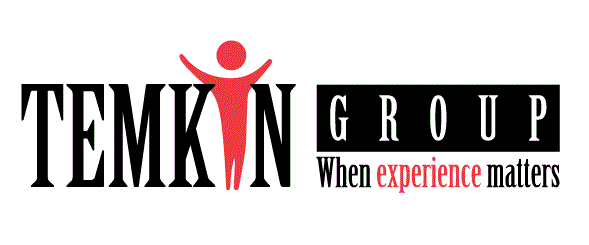
20th September 2016
Interview: Employee Engagement Awards Partner: Bruce Temkin & Aimee Lucas – Temkin Group

This interview can also be found in our eBook “Creating the best workplaces: Insights from global #EmployeeEngagement Influencers” which features 25+ interviews and much more. Download now.
The Employee Engagement Awards and Temkin Group today announced a new partnership to help educate and inspire businesses around the world to connect Employee Engagement and Customer Experience initiatives to enhance business performance.
We at the Engagement Zone spoke with their Managing Partner Bruce Temkin and Vice President Aimee Lucas about how they see and value employee engagement as well as their experiences in the field.
Bruce Temkin & Aimee Lucas
EZ: What does employee engagement mean to you?
BRUCE & AIMEE: Employee engagement is the connection that an employee feels to the goals of an organization. The deeper that connection is, the more that the employee will commit himself or herself to helping the organization succeed.
EZ: What are your three tips to companies looking to drive engagement in their organisations?
BRUCE & AIMEE: Temkin Group has found that three employee attitudes drive engagement, so those define my tips:
1. Ask for and act upon employee feedback
2. Make sure employees understand and are inspired by your organization’s mission
3. Provide employees with the skills and tools to be successful.
EZ: What do you feel are the biggest pitfalls that companies should look to avoid when executing their engagement strategy?
BRUCE & AIMEE: A big mistake is to treat employee engagement as a project. Employee engagement requires a mindset shift, not a project plan. Leaders in the company must view employees as assets to be leveraged, not as costs to be controlled. And they must recognize that employees are human beings who have their own needs and desires that need to be addressed.
EZ: Why do employees fail to buy in when companies try to ramp up engagement?
BRUCE & AIMEE: Employees can see what is real, and what is superficial. In many cases, companies try some discrete activities to increase engagement, but all other aspects of how the organization operates sends a different signal to employees. If employee engagement is not embedded in how leaders across an organization are trained and measured, then employee engagement efforts will at best make small temporary improvements.
EZ: What skills are most useful for everyone to have when trying to move towards a culture of engagement?
BRUCE & AIMEE: Temkin Group defines culture as how people think, believe, and act. So a culture of engagement requires employees to think that the organization values its employees, believe that leaders are committed to making decisions that are focused on raising the level of employee engagement, and the employees are inclined to act in ways that are helpful to the organization.
EZ: How important do you think it is to connect Employee Engagement to Customer Engagement and why?
BRUCE & AIMEE: Temkin Group has found a strong correlation between companies with excellent customer experience and those who have high levels of employee engagement. That’s why employee engagement is one of our four customer experience core competencies, along with purposeful leadership, compelling brand values, and customer connectedness. Any company that wants to provide great customer experience must master all four of these competencies.
EZ: Which person (dead or alive) would you love to be able to come in and speak to your workforce/colleagues?
BRUCE: I’d love to have Martin Seligman come in and speak. He is the founder of the positive psychology movement, Director of the UPenn Positive Psychology Center and a leading authority in the fields of resilience, learned helplessness, depression, optimism and pessimism. I think there’s a huge overlap between employee engagement and what we, individuals as well as organizations, need to do to increase our level of happiness.
AIMEE: It’s hard to separate the wellness of individuals from the wellness or organizations so I’d love to have Tom Rath come in and speak. He is a researcher and author who studies human behaviour in the context of business, health, and well-being. I’ve heard him before and a statement of his that I believe all organizations need to pay attention to is, “Companies need to stop looking at employees as ‘resources’ which implies they are consumed and used up. Instead they need to see employees as sources of energy and power behind the results of their organizations.”
NOTE: Entries for the UK & European and ANZ Employee Engagement Awards are now open. For your chance to be recognised as a great place to work, click the link here.

